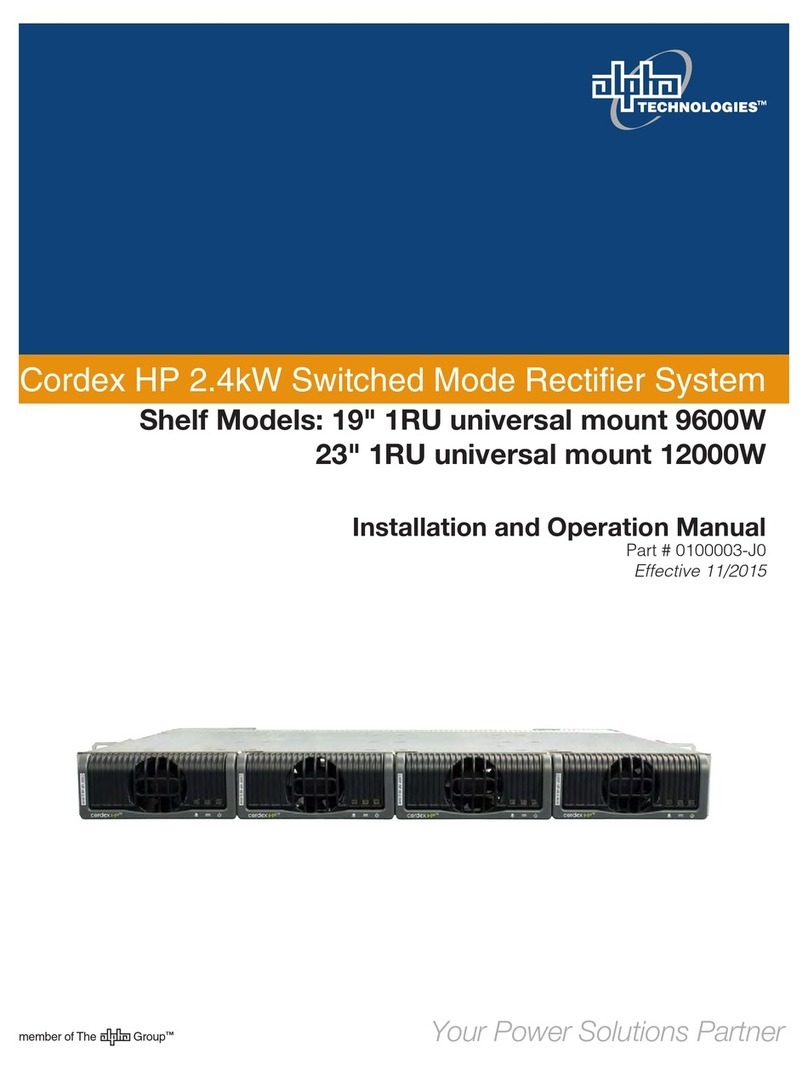i
TABLE OF CONTENTS
1!INTRODUCTION ............................................................................................................................................................ 1!
1.1!Scope of the Manual........................................................................................................................................ 1!
1.2!Product Overview ............................................................................................................................................ 1!
1.3!Part Numbers and List Options ....................................................................................................................... 2!
2!FEATURES .................................................................................................................................................................. 3!
2.1!Cordex Integrated System Controller (CXCI/CXCI+)....................................................................................... 3!
2.2!System Controller Front Panel......................................................................................................................... 3!
2.3!Analog Input Channels .................................................................................................................................... 5!
2.4!Digital Input Channels ..................................................................................................................................... 5!
2.5!Alarm and Control Output Relays.................................................................................................................... 5!
2.6!System Fail Alarm/Relay ................................................................................................................................. 5!
2.7!Network Connection and Remote Communications via CXCI/CXCI+ ............................................................. 5!
2.8!Rectifier Front Panel........................................................................................................................................ 6!
2.9!True Module Fail Alarm ................................................................................................................................... 7!
2.10!Heat Dissipation ............................................................................................................................................ 7!
2.11!Over Temperature Protection ........................................................................................................................ 7!
2.12!Wide AC Range............................................................................................................................................. 7!
2.13!AC Inrush/Transient Suppression.................................................................................................................. 7!
2.14!Soft Start........................................................................................................................................................ 8!
2.15!Start Delay..................................................................................................................................................... 8!
2.16!Current Limit/Short Circuit Protection ............................................................................................................ 8!
2.17!Power Limiting ............................................................................................................................................... 8!
2.18!High Voltage Shutdown (HVSD).................................................................................................................... 8!
2.19!Battery Eliminator Operation ......................................................................................................................... 8!
3!INSPECTION ................................................................................................................................................................ 9!
3.1!Packing Materials ............................................................................................................................................ 9!
3.2!Check for Damage........................................................................................................................................... 9!
4!INSTALLATION........................................................................................................................................................... 10!
4.1!Safety Precautions ........................................................................................................................................ 10!
4.2!Shelf Preparation/Mounting ........................................................................................................................... 10!
4.3!Module Insertion/Removal............................................................................................................................. 10!
5!WIRING AND CONNECTIONS ....................................................................................................................................... 11!
5.1!Safety Precautions ........................................................................................................................................ 11!
5.2!Tools Required .............................................................................................................................................. 11!
5.3!Power System Chassis Ground and DC Ground Reference ......................................................................... 11!
5.4!AC Feeder Protection/Sizing ......................................................................................................................... 11!
5.5!AC Input Connections.................................................................................................................................... 12!
5.6!Calculating Output Wire Size Requirements ................................................................................................. 12!
5.7!DC Output Connections................................................................................................................................. 12!
5.8!CAN Out Port................................................................................................................................................. 13!
5.9!Network Connection and Remote Communications via CXC........................................................................ 13!
5.10!Signal Wiring Connections .......................................................................................................................... 13!
6!OPERATION .............................................................................................................................................................. 16!
6.1!Main Rectifier States ..................................................................................................................................... 16!
6.2!Main Rectifier Modes..................................................................................................................................... 17!




























